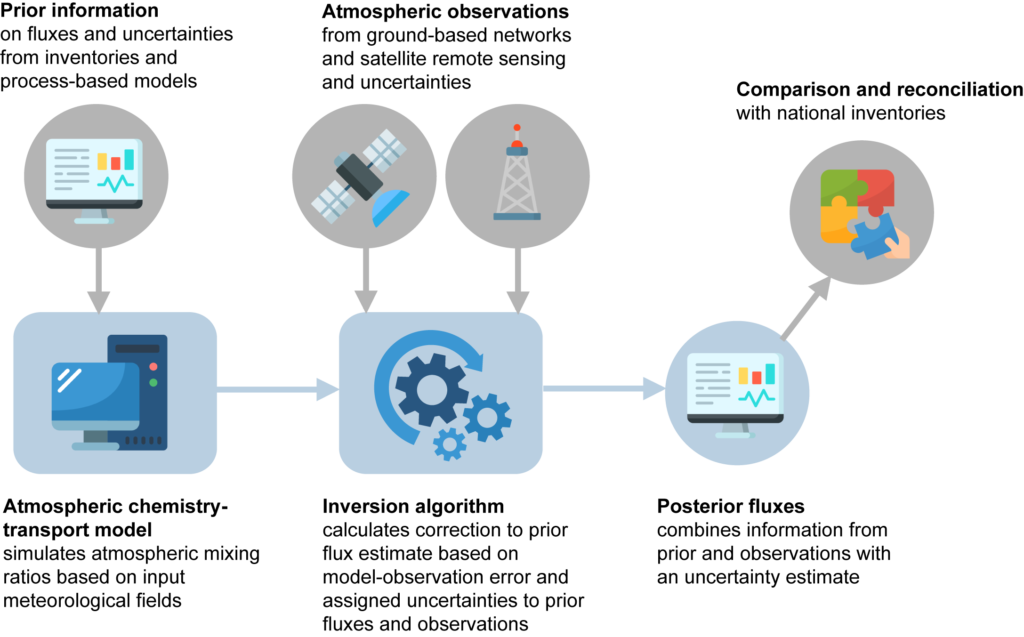Atmospheric inverse modelling
Changes in atmospheric concentrations represent the integrated effect of human plus natural emissions and removals, atmospheric transport, and any atmospheric production and loss. By accounting for atmospheric production and loss, changes in concentrations can be used to constrain human plus natural emissions and removals. Using a model of atmospheric transport and chemistry, changes in concentrations can be used to infer spatially and temporally resolved fluxes – a method known as atmospheric inversion.
Atmospheric inversion is a particularly important part of the methodology and will likely play an increasingly important role in the future as observation-based methods for emissions estimation and verification become more in demand and used. Therefore, EYE-CLIMA will have a strong focus on improving both the accuracy and resolution of regional inversions.
In EYE-CLIMA, inversions will be run at high resolution (i.e., 0.2°) over Europe with realistic boundary conditions from state-of-the-art global models. This approach has two main advantages: i) it will ensure consistency of individual country emission estimates at the European scale, and ii) it will reduce the impact of the boundary conditions. EYE-CLIMA will also contribute to the further development of the Community Inversion Framework (CIF) to improve the efficiency of including large volumes of observations from new satellite missions.

